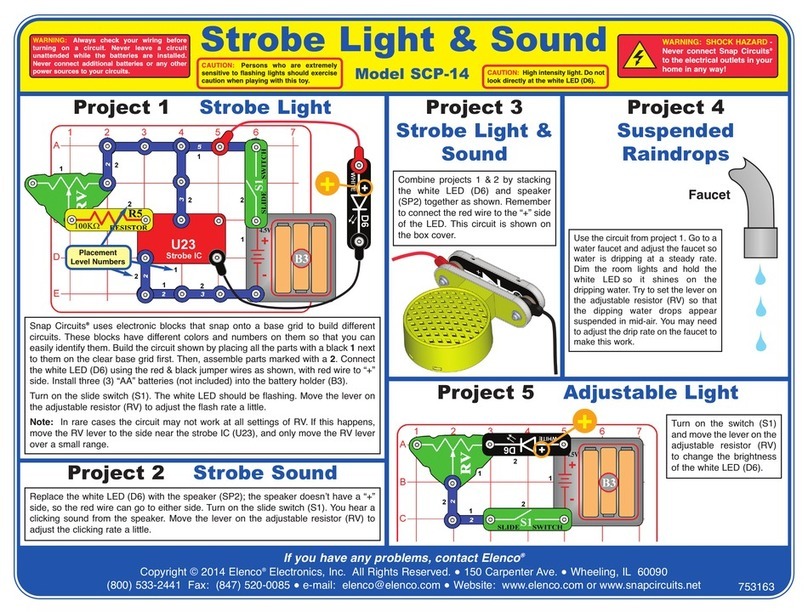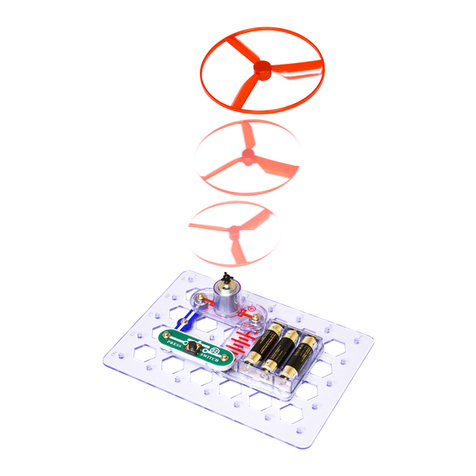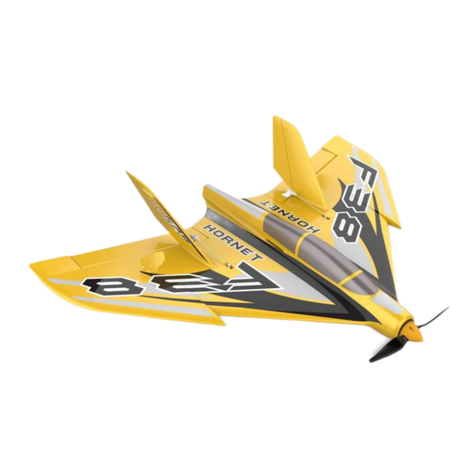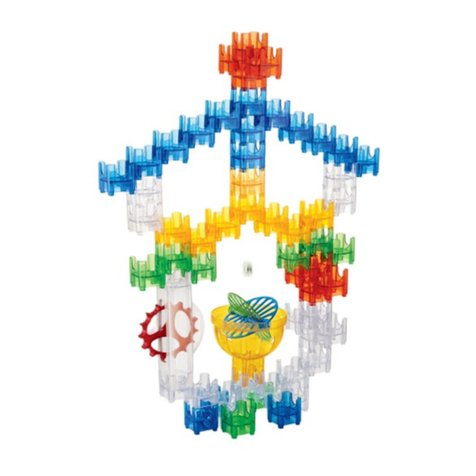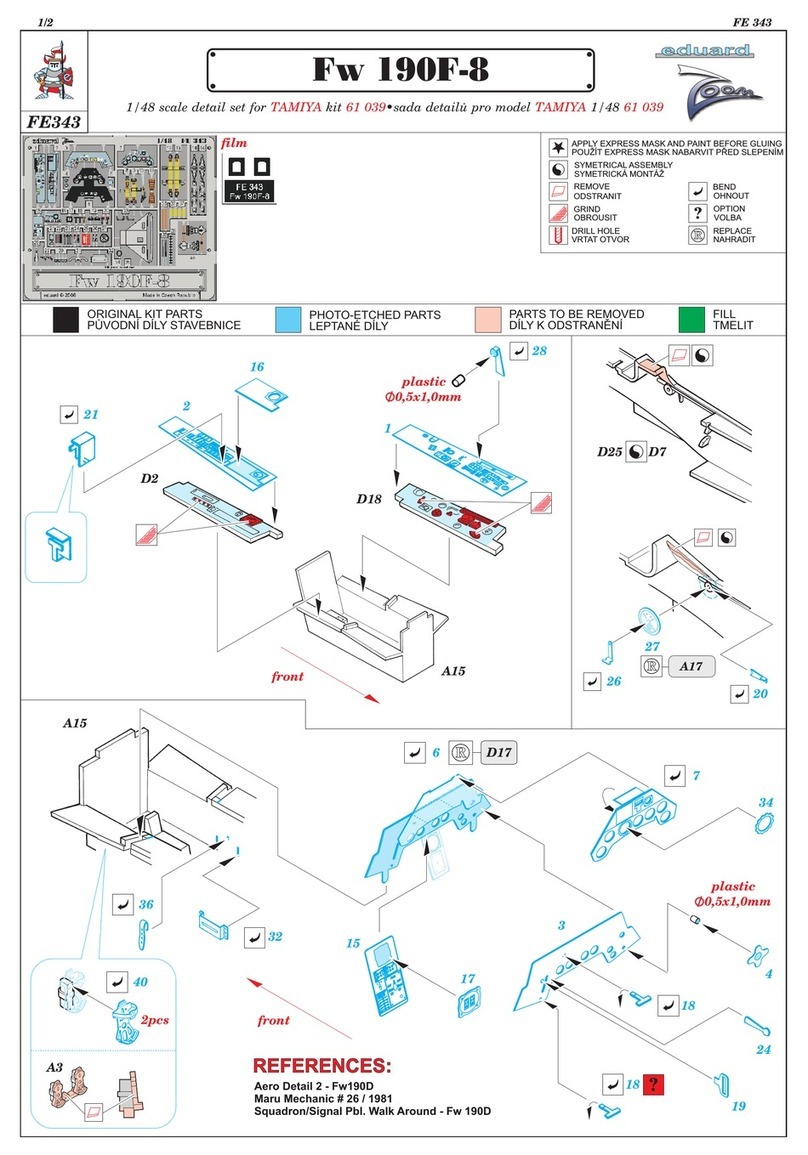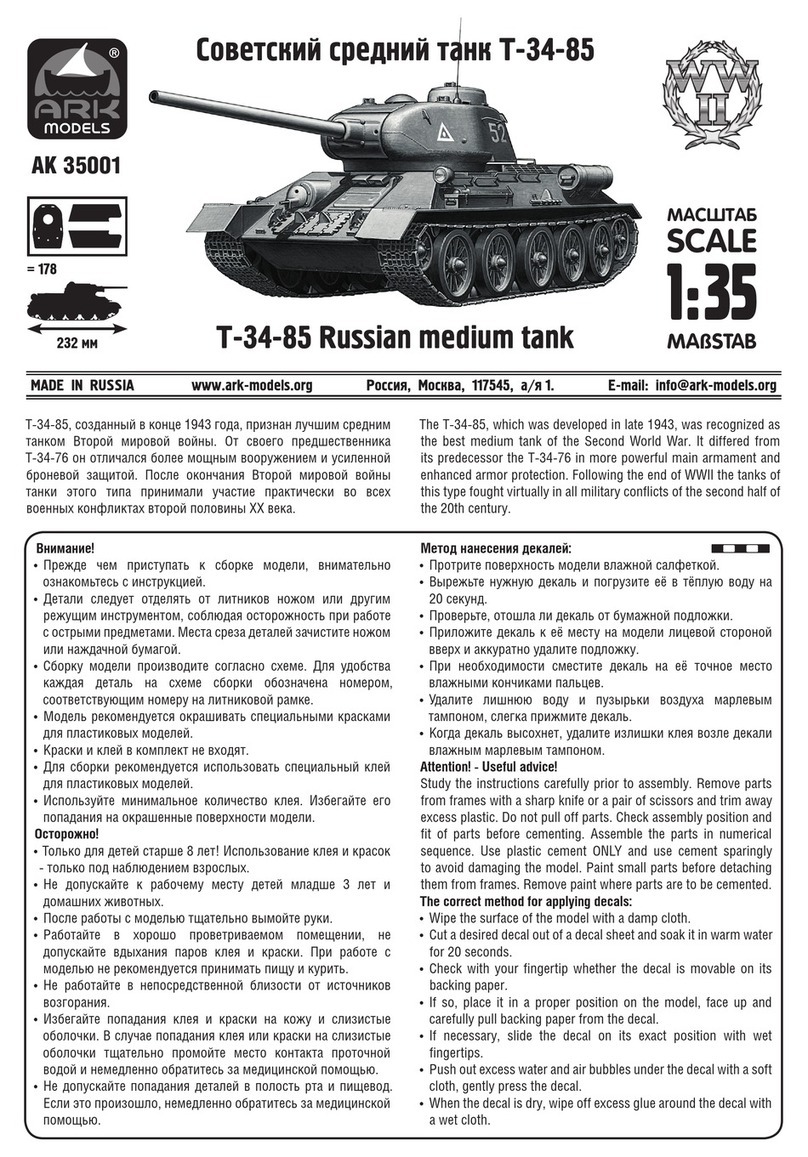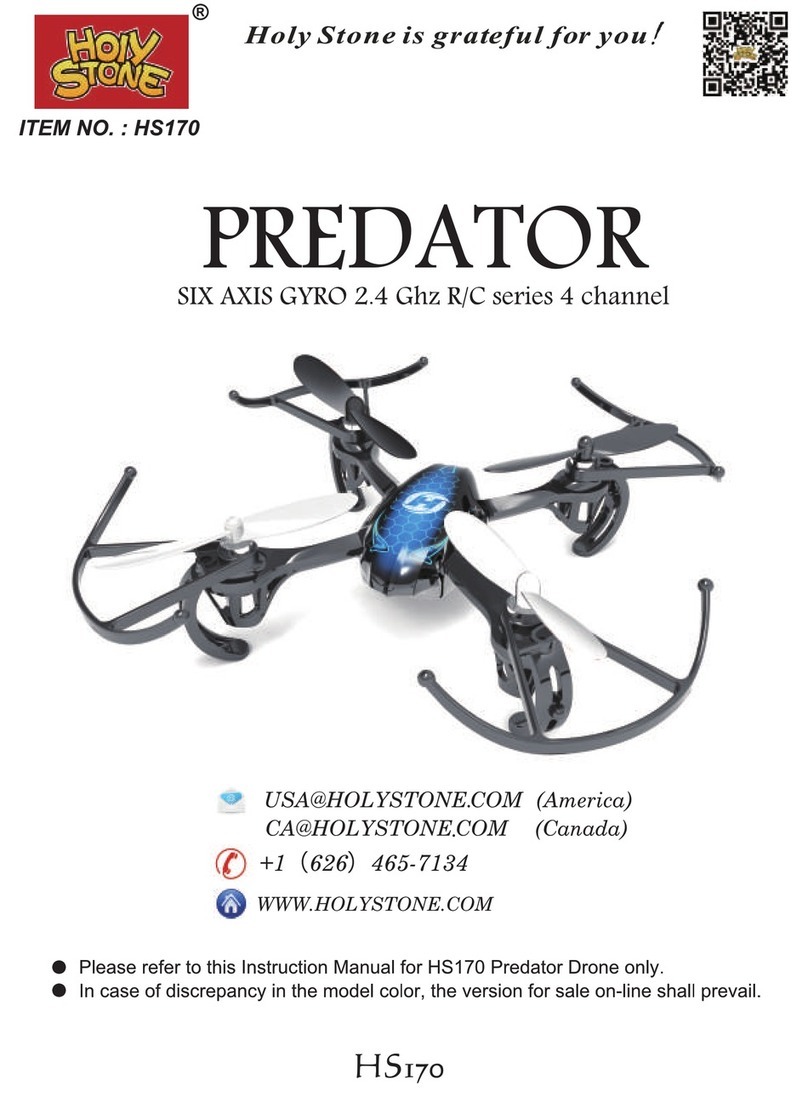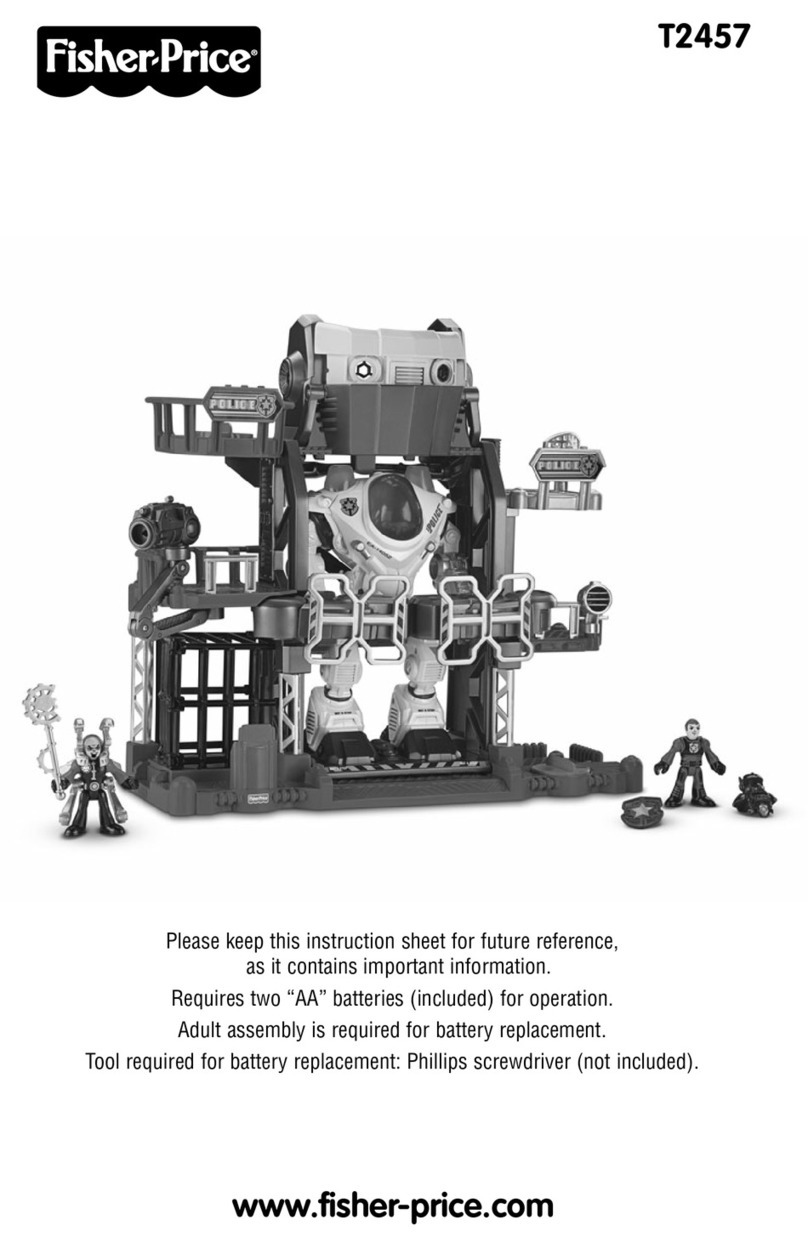SNAP CIRCUITS ELENCO TEACH TECH Tusk Solar Wild Boar Installation guide

From the Makers of
TTG-682 8 +
ASSEMBLY & INSTRUCTION MANUAL

Contents
1
Introduction P. 2
Tools You May Need P. 2
Mechanical Parts List P. 2
Plastic Parts P. 3
Mechanical Assembly P.4-10
Powering Tusk P. 11
Solar Power P.12
How a Solar Panel Works P.13

P2 P3
2
Safety Glasses
Solar Wild Boar is an ideal solar DIY kit for a do-it-yourself science fair, after-school,
or summer workshop project with the bonus of learning mechanical transmission
and solar power. With only 47 assembly parts, it’s a wonderful project for the
beginner enthusiast 8 years and up. Solar Wild Boar is an opportunity to have fun
while learning.
P1 Solar Panel With Motor
1 1 1
Gear (Red)
Gear (Orange) Gear With Shaft (Blue) Sponge
P4
QTY
1
P5
QTY
1
P6
QTY
1
Pinion Gear
(Yellow)
P7
QTY
2
P8
QTY
1
P9
QTY
2
Hex Shaft Round Shaft (Long)
Round Shaft (Short)
QTYQTY QTY
Tools You May Need
Introduction
Hammer
Diagonal Cutter
Mechanical Parts List
Important: If any parts are missing or damaged, DO NOT RETURN TO
•
•Product contains functional edges and sharp points.

3
Plastic Parts
Please Read Before Assembly
Remove burrs
burr
burr
Cut off the plastic parts when they are required.
Do not cut them in advance.
3
2
13
4
C
4
3
2
1
88
B
566
7
35
6
7
8
11
10
9
2
14
A
A
C
B
Some burrs are left at the edge of plastic parts after cutting them off.
Make sure the burrs are completely removed to avoid operation malfunction.

1
3 4
2
4
C4
P3 (Red)
P8 (Short)
A1
Side View
P1
P2
Mechanical Assembly
2
1
1
2
P6
Correct
Incorrect
Correct Incorrect

5
5
6
Ensure that parts are facing
the correct direction (see below).
Cutt off burrs on B4 before assembly.
P5
(Orange)
P4
(Blue)
P5
(Red)
P3
B4
A11
B7
P4
B1
2
2
1
1
Correct
Incorrect
Incorrect
Incorrect
B4
Correct Incorrect

8
9
7
6
Side View
Cut off the
two burrs before
assembly.
A2
Incorrect
Incorrect
1
2
1
2
A2
A10
Use your finger to hold the part (as shown below) and attach A10.
Use your finger to hold A10
(as shown) and attach A2 to A10 .

10
12
11
13
7
2
Slightly hammer P7 into A5.
C2
A4
B8x3
A5
The open -side - face up ( as per the pic).
P7

15
14
8
C3x2
B3
P9x2 (Long)
Note: Steps 14 - 19, Place assembly on the desk or table.
Press C3 to the bottom.
Very Important !
Correct
Incorrect

17
18 19
9
16
B2
A3
B5
C1
Very Important !
Please point the feet in the direction illustrated above
before inserting B2 part.

20 21
22 23
10
2
Incorrect
A6
B6x3
Very Important !
A8
A9
A7
R
Cut off burrs on A8 & A9 before assembly.
L
Point the feet in the direction as illustrated
before inserting into the shaft.
Finished

11
Place Tusk in the sunlight and tilt the solar panel so it faces directly into the sun.
The motor should start turning and Tusk will come to life. When you are not using
Tusk, keep it out of the sun so the motor won’t run. Also, don’t use Tusk outdoors
when it’s raining. If there is no sunlight, use a 50W halogen light bulb to simulate
the sun.
With adult supervision, shine the lamp approximately five inches from the solar
panel. The light should be enough to drive Tusk.
CAUTION: Do not shine the lamp on it more than three minutes as the heat may
melt the plastic frame.
Powering Tusk

12
Solar Power
Solar power: With energy costs and pollution rising, the limitless supply of pollution free
solar energy will have an ever-increasing role in meeting our world’s energy needs. Since the
sun will always be bright, solar energy will always be available. Solar panels are quiet, clean,
and will last for years since they don’t have any moving parts that can wear out. Although
electricity produced from solar panels is still several times as expensive as electricity
produced by normal energy sources, however that is changing as solar panels become less
expensive and more ecient. Scientists are constantly experimenting with new ways to
capture the energy radiated from the sun. More and more products are being developed that
use solar panels as their power source.
Sun power: The sun produces heat and light on an immense scale, by transforming
Hydrogen gas into Helium gas. This “transformation”is a thermonuclear reaction, similar to
the explosion of a Hydrogen bomb. The earth is protected from most of this heat and
radiation by being so far away, and by its atmosphere. But even here the sun still has power,
since it can power the motor in your kit and give you sunburn on a hot day.
Nearly all of the energy in any form on the surface of the earth originally came from the sun.
Plants get energy for growth from the sun using a process called photosynthesis. People and
animals get energy for growth by eating plants (and other animals). Fossil fuels such as oil
and coal that power most of our society are the decayed remains of plants from long ago.
These fuels exist in large but in limited quantity and are rapidly being consumed.
Born in the space program: The solar panel is a photo-voltaic cell, with photo meaning light,
and voltaic meaning that it produces electricity. Photo-voltaic cells were rst developed for
the space program to recharge batteries and power various systems in spacecraft and
satellites. Although they were expensive, they save money because heavier batteries or other
fuel sources did not have to be launched into earth’s orbit on very expensive rockets. The
sun’s brightness is reduced when it passes through the earth’s atmosphere, so solar cells are
more ecient in space.
Solar cells are used to power most satellites because they are lightweight and never wear out
(sending a serviceman to do maintenance on a satellite is extremely expensive). Over the
years, manufacturing processes for photo-voltaic cells have improved and have reduced in
costs, and now they are used in many common products on earth such as calculators, and
often charge batteries in industrial applications. It is likely that a large portion of America’s
electricity will be produced from solar cells by the end of this century.

13
Your solar panel is made from silicon, like the transistors and microprocessor used throughout the
electronics industry. Silicon is easy to nd, since ordinary sand contains mostly silicon.
The silicon is rened into two layers of very pure crystal, but tiny amounts of dierent minerals
(such as Boron and Phosphorus) are added to give one side a positive electrical charge and the
other side a negative charge. These opposite charges cancel each other out, producing a neutral
cell. However, when sunlight shines on the silicon crystal, charged particles in the light unbalance
the cell and create an electrical charge across it (called a voltage). By connecting wires to the
positive and negative layers, this voltage will make a ow of electrical charge, called an electric
current.
Solar cells operate best when bright sunlight is always available. Unfortunately, most areas of the
United States only get about 4-5 hours of sunlight per day on average. The electricity needs of
people vary throughout the day, whether or not the sun is shining. Because of this, most solar cell
arrays are used to charge rechargeable batteries. The batteries provide for people’s electricity needs
throughout the day and are recharged whenever the sun shines. Solar power is often used in
remote desert areas, because it is too expensive to build electricity distribution networks to them.
How a Solar Panel Works
Positive
Contact
Sunlight
(photons)
Electrons
Negative
Silicon
Positive
Silicon
Current Flow
Direction
Negative
Contact
Barrier Layer

14

753187
150 Carpenter Ave.
Wheeling, IL 60090, USA
(847) 541-3800 or (800) 533-2441
elenco.com
No part of this book shall be reproduced by any means; electronic, photocopying,
or otherwise without written permission from the publisher.
Printed in Taiwan
US Patent D811,494S
Not responsible for typographical errors.
Teach TechTM is a trademark of Elenco Electronics Inc.
Copyright© 2019 Elenco Electronics Inc. All rights reserved.
CHOKING HAZARD. Small Parts.
Not for children under 3 years old.
This manual suits for next models
1
Table of contents
Other SNAP CIRCUITS Toy manuals
Popular Toy manuals by other brands

Famosa
Famosa FEBER Seater totter manual
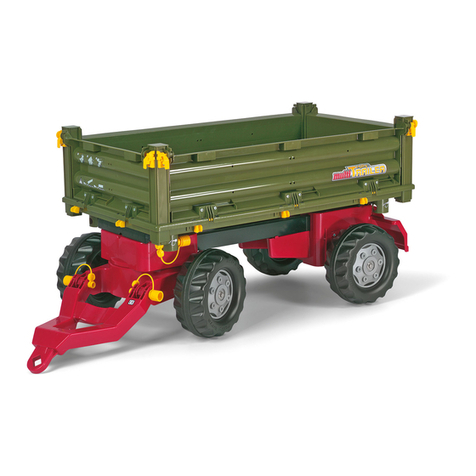
Rolly Toys
Rolly Toys rollyMulti Trailer quick start guide

MegaTech
MegaTech MTC8210 GREEN manual

Nemesis
Nemesis SEA111 Assembly manual

Phoenix Model
Phoenix Model Tiger Moth instruction manual

AXM Paper Space Scale Models
AXM Paper Space Scale Models IRVINE 01 CubeSat instruction manual
